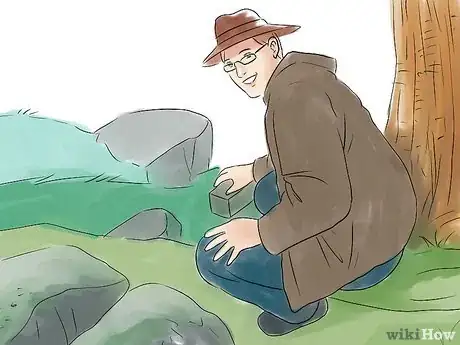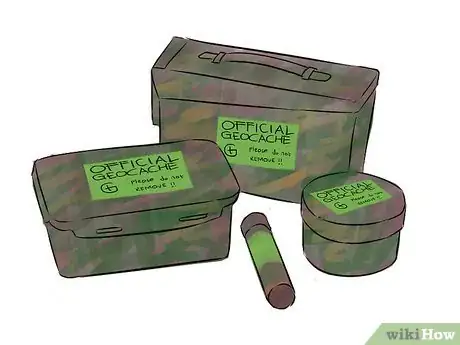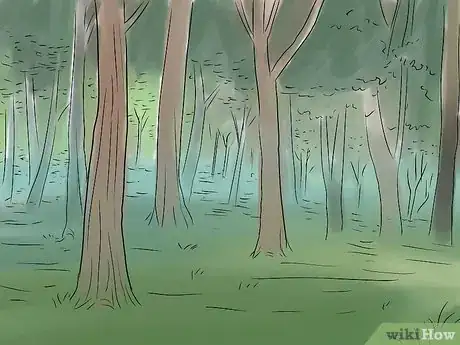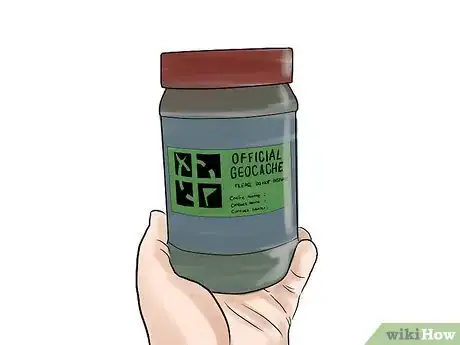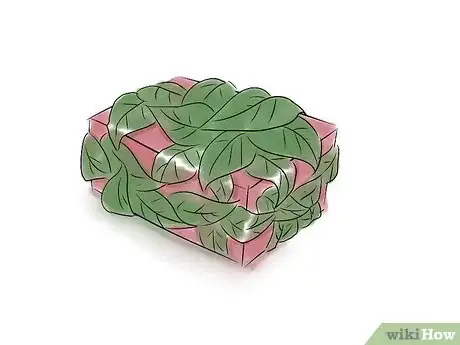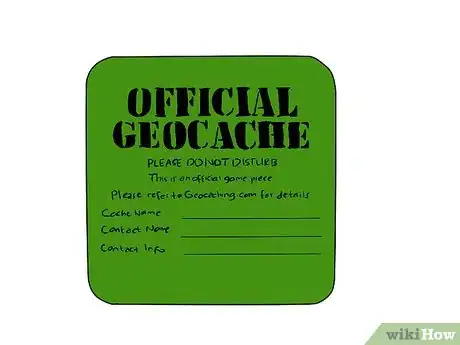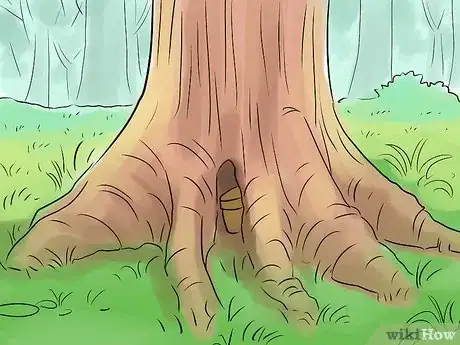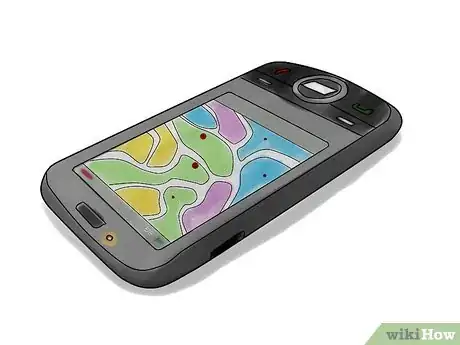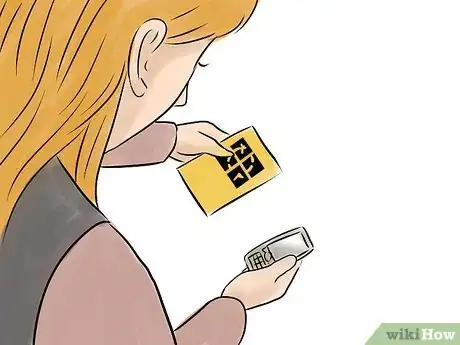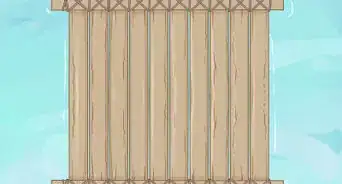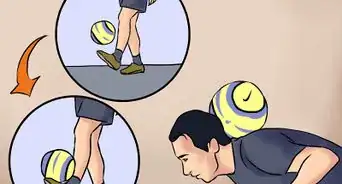wikiHow is a “wiki,” similar to Wikipedia, which means that many of our articles are co-written by multiple authors. To create this article, 41 people, some anonymous, worked to edit and improve it over time.
wikiHow marks an article as reader-approved once it receives enough positive feedback. In this case, 92% of readers who voted found the article helpful, earning it our reader-approved status.
This article has been viewed 157,672 times.
Learn more...
Geocaching is a relatively new, family-friendly hobby where participants use GPS technology to seek geocaches hidden by fellow geocachers. At its heart is creating and hiding geocaches.
Steps
-
1Search for existing geocaches before trying to create your own and hide it. Try to find a variety of cache types and sizes in various terrains and locations and covering the spectrum of difficulty levels. This will allow you to determine which things work well and help you form wise choices in this endeavor.
- Some people will advise you to find X number of caches, but if they are mostly of one type, it won't be helpful. You'll learn more finding ten caches of ten different types than one hundred caches of a similar type. It is helpful to gain a little experience first.
-
2Find a good spot for your geocache. A quality geocache will be hidden near something of natural, human, historic, or scenic interest or at least at the end of a pleasant walk. Try to make it a place that people would enjoy visiting even if the cache wasn't there.Advertisement
-
3Make sure certain geocaches are allowed there. If it is private property, obtain permission from the land owner. Some park systems require permits and some do not allow geocaching, so check with park management to make sure geocaching is allowed, then obtain a permit if required.
-
4Select an appropriate container. Geocache containers should be waterproof and durable. Military surplus ammo boxes are a favorite of many geocachers. Also make sure the container is appropriate for the area (see Tips, below). A good seal is important, because, if water leaks in, the cache will be ruined.
-
5Camouflage the container. This is optional but will help keep non-geocachers from finding it. Painting it in colors which match the area or wrapping it in camouflage duct tape are two ways that will help conceal it. Other methods include gluing bark to the container or hiding it under fake rocks or tree stumps.
-
6Label the outside. In today's world, suspicious packages can create alarm. Clearly labeling your container as a geocache and with the proper contact information may reduce the chances of your cache being reported as suspicious package.
-
7Stock the cache. Include a letter explaining what it is, just in case a non-geocacher finds it. Also include a logbook, pencil, and, if the geocache is large enough, trinkets for finders to trade out.
-
8Hide your cache. Your cache is more likely to last if you choose a low traffic area where it is not likely to accidentally be discovered and where searchers won't be spotted by passersby, business owners, security guards, or residents.
-
9Use your GPS to obtain the coordinates. Make sure you have a good satellite signal, then let your GPS settle at the cache site for a minute or two before marking. Check your owners' manual for the section on how to mark a waypoint if you don't yet know.
-
10List your cache. You need to post it on a website so other geocachers can obtain the coordinates. The most popular site, by far, is www.geocaching.com. Other sites include www.navicache.com, www.terracaching.com, opecaching.com and www.opencaching.us.
-
11Maintain your cache. Be ready to respond promptly to reported problems such as missing containers and wet or full logbooks. If you lose interest, remove your cache and archive the listing.
Community Q&A
-
QuestionDo I need any kind of premium site account to hide geocaches?
 Community AnswerNo, you don't. Anyone can hide geocaches and register them with geocaching websites.
Community AnswerNo, you don't. Anyone can hide geocaches and register them with geocaching websites. -
QuestionWhat kinds of things should I put in the geocache?
 Community AnswerYou should put a pen/pencil, logs, and some nick-knacks for trading.
Community AnswerYou should put a pen/pencil, logs, and some nick-knacks for trading. -
QuestionWhat are some examples of geocaching containers?
 Community AnswerHere are some examples: Tupperware containers, pill bottles, jars, and ammo boxes.
Community AnswerHere are some examples: Tupperware containers, pill bottles, jars, and ammo boxes.
Warnings
- Lands managed by the National Park Service (e.g., national parks, national recreation areas and national historic sites) and by the US Fish and Wildlife Service (e.g., national wildlife refuges) are generally off limits for geocaches. Some National Park Service lands have started allowing geocaching on an experimental basis, but permission is required from the superintendent. Many nationally designated wilderness areas are also off limits, as are some state and local parks. If in doubt contact the managing authority and ask.⧼thumbs_response⧽
- Do not hide caches near bridges, tunnels, military installations, airports, bus terminals, train stations and railroad tracks, schools or other places that might be deemed terrorist targets.⧼thumbs_response⧽
- Many park systems have rules governing geocaches. Thoroughly check for existing regulations before hiding your cache. If in doubt, seek guidance from your local geocaching society or club.⧼thumbs_response⧽
- If your cache is accidentally discovered and creates public alarm, you might be subject to prosecution and fines.⧼thumbs_response⧽
- Don't hide your cache on a the property of a business without first consulting with the owner.⧼thumbs_response⧽
Things You'll Need
- GPS device
- Durable, waterproof Geocontainer
- Small notebook and pen
- A good hiding place
- Permission from parent or guardian
References
- www.geocaching.com
- www.terracaching.com
- www.navicache.com
- www.opencaching.us
